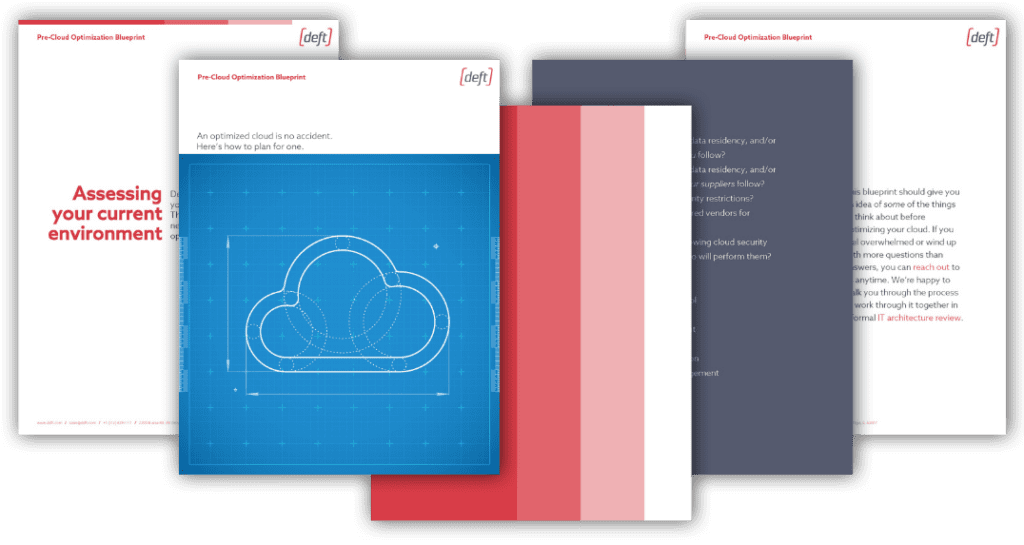
Need your company’s cloud to cost what you expect and perform how you want? Good — then you need to plan that out.
You can’t just tell your developers to set up free trial cloud accounts. Those free accounts then become not-free cloud accounts, which then become your production cloud environment. That’s how it happens in reality. But it doesn’t have to.
It helps to be cloud-smart, not cloud-first (AKA let the workloads dictate where they should live). Either way, an optimized cloud is no accident. Here’s how to plan for one.
Assessing your current environment
Deft can help you optimize your existing environment, but you can do it on your own. Here’s the high-level information we need to gather before optimization can begin to be used in your own assessment:
- Strategy & Motivation: This section helps us understand the pain points that are driving your optimization project.
- Current Inventory & Environment Assessment: This is the longest section that helps us map out your current IT and cloud architecture in order to understand project scale and size. This section also catalogs your IT team, applications in use, and your entire data center/cloud hosting setup.
- Processes and Automation: This section covers DevOps processes and any automation tooling in place.
- Stakeholders: This section outlines all decision-makers and approval processes.
- Security and Compliance: This is where we understand the regulatory, compliance, data residency, and/or security requirements both you and your providers must follow.
- Disaster Recovery: This section covers your existing business continuity plans and the expectations around recovery time on an app-by-app basis.
- Planning & Governance: This is where we discuss timelines, ownership, and plans for expansion that may impact our approach to future-proofing.
